Junk in Space: Understanding Orbital Debris Challenges
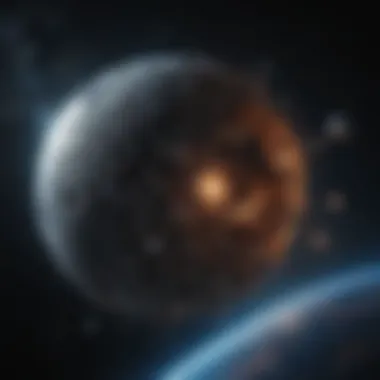
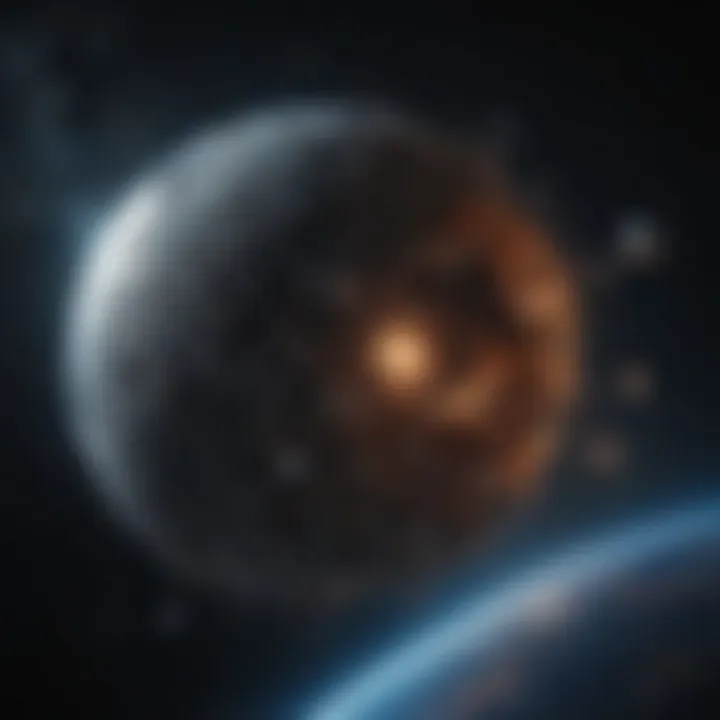
Intro
The challenge of orbital debris has emerged as a pressing concern within the realm of space exploration. The sheer volume of junk orbiting our planet has increased significantly over the years. Starting from defunct satellites to spent rocket stages, the remains of past missions are now a serious threat to active spacecraft. As humanity pushes further into space, understanding this issue becomes indispensable for ensuring the safety of current and future missions.
This article investigates the origins, implications, and mitigation strategies associated with orbital debris. By delving into these aspects, it aims to provide a well-rounded perspective on how the scientific community can tackle this growing problem effectively.
Research Overview
Key Findings
Recent studies reveal troubling insights regarding space debris:
- Approximately 34,000 pieces of debris larger than 10 cm are currently tracked in orbit.
- There are an estimated 1 million pieces of debris measuring between 1 and 10 cm, which are difficult to track but pose significant risks.
- More than 20,000 fragments have resulted from various collisions in orbit.
The increasing density of space debris raises the likelihood of collisions, jeopardizing the safety of satellites and crewed missions. The long-term sustainability of space operations is directly tied to how well this challenge is addressed.
Study Methodology
Research in this field employs a mixture of quantitative and qualitative methods. Satellite tracking and monitoring systems like the U.S. Space Surveillance Network collect data on the size and trajectory of debris.
Surveys and case studies examine the implications of collisions, analyzing incidents that have occurred. Academic and governmental organizations combine their resources to create comprehensive databases, aiding in the understanding of the debris environment.
Background and Context
Historical Background
The origins of orbital debris can be traced back to the early days of space exploration. The first artificial satellite, Sputnik 1, was launched in 1957. Since then, thousands of satellites have been deployed. Not all these missions have ended successfully. In the years following, the accumulation of defunct satellites began to raise concerns.
Current Trends in the Field
In recent years, there has been a noticeable uptick in awareness and research regarding space debris. International collaborations are becoming more common, with organizations such as the European Space Agency and NASA leading the way in active debris removal initiatives. The adoption of guidelines for satellite design and disposal has also become a point of emphasis.
Efforts to promote sustainable practices in space exploration are growing. Innovations like the IDEA OSG 1, a satellite designed to capture and deorbit debris, are pioneering steps toward a cleaner orbit.
"Mitigating space debris is no longer an option; it is a necessity for safe and sustainable exploration."
Foreword to Space Debris
The problem of space debris is an increasingly significant issue in the realm of space exploration. This section introduces the concept of "junk in space" and highlights the importance of understanding its implications. As more satellites and spacecraft are launched, the amount of debris in orbit grows, leading to potential hazards for active missions. Assessing the challenges posed by this debris is crucial for both current and future space operations.
Definition of Junk in Space
Junk in space, also referred to as space debris, encompasses all man-made objects that are no longer functional and remain in orbit around Earth. These include defunct satellites, spent rocket stages, or fragments resulting from collisions. The term can also refer to smaller particles, such as paint flecks and smaller fragments that have become detached from larger objects.
Space debris creates a real concern as it travels at incredibly high speeds. A simple collision between operational spacecraft and debris can have catastrophic consequences. The United Nations Office for Outer Space Affairs defines space debris as anything from basic equipment to larger remnants of space missions, negatively affecting space safety.
Historical Context
The history of space debris began with the dawn of the space age in the late 1950s. The first artificial satellite, Sputnik 1, was launched by the Soviet Union in 1957, initiating human presence in outer space. Since then, thousands of satellites have been deployed, many of which are now defunct.
In the following decades, numerous missions contributed to the growing problem of space debris. Key events include the destruction of the defunct satellite Fengyun-1C in 2007, which resulted in thousands of debris fragments. Events like this have prompted discussions on the need for monitoring, regulation, and strategies to mitigate debris in orbit.
With the increasing number of space missions by various nations and private entities, it is essential to understand both the historical and ongoing challenges posed by space debris. Contemporary strategies for addressing these problems must build on this historical context and evolve as our engagement with outer space continues to expand.
Types of Orbital Debris
Understanding the various types of orbital debris is crucial for the effective management of space environments. Each category presents unique challenges and risks to both manned and unmanned missions. Moreover, addressing these types is a fundamental step in developing relevant solutions for ongoing concerns regarding space safety.
Defunct Satellites
When these inactive satellites drift in orbit, they can collide with operational equipment. Such collisions generate even more debris, creating a cascading effect. In light of this, former satellite operators face growing pressure to implement designs that allow for easier deorbiting and removal after operational life has ended. Significant understanding of end-of-life protocols is necessary for future missions to minimize this risk.
Rocket Upper Stages
Rocket upper stages, which are left in orbit after a launch, also contribute to the problem of space debris. These stages typically shed multiple components during their ascent, and post-mission, they may remain in various orbits, often inclined and unpredictable. Their presence can compromise the trajectory of space objects that rely on precise paths to function correctly.
Stakeholders in the aerospace industry recognize the need to track these stages closely. Many upper stages are not designed with deorbiting in mind. This has raised questions about the necessity for stricter regulations governing their design and operation at the end of missions. Enhancing tracking systems to monitor these objects can significantly improve situational awareness in space.
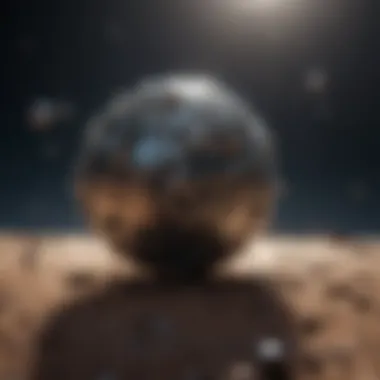
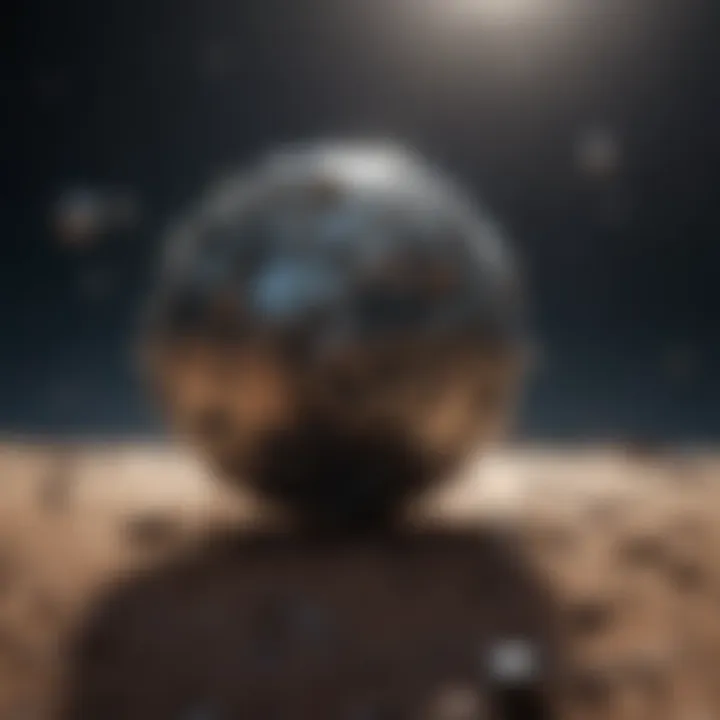
Fragmentation Events
Fragmentation events, including satellite explosions and collisions, create substantial amounts of debris. These events can occur due to various factors: internal malfunctions, collisions with other space debris, or as a result of intentional destruction. The outcomes of such events jeopardize active satellites and astronauts in the vicinity.
To mitigate risks from fragmentation, ongoing research focuses on developing better predictive models regarding collision probabilities. Understanding how debris disperses after an event can aid in implementing safety protocols for future space missions. Moreover, countries around the world are beginning to share data about fragmentation events, allowing for a more comprehensive approach to tackle this issue collectively.
Sources of Space Debris
The issue of space debris is pressing and complicated, with various sources contributing to its rise. Understanding these sources is essential for developing effective mitigation strategies. This section delves into two major contributors: past space missions and collisions in orbit. Each source offers insights into the broader implications and consequences of this issue on current and future space operations.
Past Space Missions
The legacy of past space missions plays a crucial role in the accumulation of orbital debris. Since the beginning of the space age, various missions have left behind defunct satellites, rocket parts, and equipment that are no longer operational. These objects often remain in orbit for decades, only adding to the debris problem.
Two specific factors highlight how past missions contribute to debris:
- Defunct Satellites: These are satellites that have ceased to function. Once operational, they served significant functions, like communication and research. However, when their missions end, they often remain in orbit, leading to concerns about potential collisions.
- Spent Rocket Stages: Rockets used to launch satellites and other devices often shed stages after launch. Many of these stages have not been deorbited, presenting another risk factor. Each spent stage represents a potential collision hazard for active missions.
The implications extend beyond shorter missions. Each defunct piece of equipment increases the risk of collision with operational spacecraft, ultimately threatening important ongoing research and exploration efforts. In this way, past missions linger in space as reminders of the need for mindful planning and design.
Collisions in Orbit
Collisions represent one of the most unpredictable sources of space debris. These incidents can generate thousands of pieces of debris, compounding the existing problem. They can occur when two objects in space, such as satellites or other debris, collide and fragment.
Key aspects of orbital collisions include:
- Inadvertent Collisions: Many collisions happen without warning. A defunct satellite might collide with an operational one, creating chaos and leading to numerous fragments. As these fragments drift in various directions, they pose increased risks for subsequent missions.
- Kessler Syndrome: This theory describes a scenario where the density of objects in low Earth orbit is high enough that collisions could trigger a cascade effect. This phenomenon suggests that one collision could lead to another, ultimately creating an environment where space travel becomes exceedingly hazardous.
"With an increasing number of satellites launched, the potential for collisions also grows, making it vital to implement tracking and warning systems."
Impact on Space Operations
The presence of orbital debris poses significant challenges to current and future space operations. The complexity of these challenges stems not only from the sheer volume of debris in Earth's orbit but also from the unpredictability of its trajectories. Understanding the implications of space debris is crucial for any mission planning due to the potential for catastrophic collisions.
Threat to Current Missions
Current space missions face numerous threats related to orbital debris. Satellites, whether they are for communication, data gathering, or navigation, can suffer damage from collisions with even tiny fragments. The high speeds at which debris travels amplify the risk, which can result in loss of functionality or complete destruction of valuable assets.
For instance, incidents like the 2009 collision between Iridium 33 and Cosmos 2251 highlight the realities of this threat. Such events can create thousands of new debris pieces, compounding the risk for future missions. Moreover, even operational satellites must undertake avoidance maneuvers, diverting precious resources and time to dodge potential debris, which was not part of the original mission plan.
Additionally, as missions expand into more delicate realms, such as crewed missions to the International Space Station or future lunar explorations, the stakes heighten. The operational protocols for shielding spacecraft from debris become an increasingly important consideration, impacting everything from design to budget allocation.
Long-Term Implications
The long-term implications of space debris extend far beyond isolated incidents. As more countries and private entities engage in space exploration, the risk of debris increases, making it vital to understand potential repercussions. Continued accumulation of debris raises the likelihood of higher collision rates, creating a scenario known as the Kessler syndrome. This phenomenon suggests that if the density of objects in low Earth orbit is high enough, collisions could trigger a cascade effect of collisions, rendering specific orbits unusable.
Consequently, the sustainability of future space operations hinges on effective debris management. Without concrete steps to mitigate and remove debris, the economic viability of launching new missions could diminish. Increased insurance costs and potential mission failures may deter investment in space technology, ultimately stifling innovation.
Monitoring and Tracking Orbital Debris
Monitoring and tracking orbital debris is a crucial aspect of ensuring the safety and sustainability of space operations. As the number of satellites and other objects in orbit increases, so too does the need for robust systems to monitor these assets. Effective tracking not only helps avoid collisions with operational spacecraft but also aids in understanding the origin and behavior of debris in Earth's orbit.
Current methodologies can identify and track larger pieces of debris using radar and optical systems. However, challenges remain concerning smaller debris fragments, often referred to as micro-debris. The importance of tracking extends beyond immediate safety; it also informs policy decisions and aids in the development of better debris mitigation strategies.
Current Tracking Systems
Several systems are currently in place to track orbital debris. Among the notable ones are:
- Space Surveillance Network (SSN): Operated by the United States Space Force, the SSN uses radar and telescopes to track both operational satellites and space debris. It provides data to international partners to help ensure space traffic safety.
- European Space Agency's Space Debris Office: This organization focuses on cataloging debris and predicting potential collisions. They utilize their unique sensors and computational resources to maintain an updated database of space debris.
- JAXA’s Space Debris Program: The Japan Aerospace Exploration Agency employs observations and simulations to understand orbital debris better and develop countermeasures.
These systems work collaboratively to improve awareness of debris levels in Earth’s orbit. They utilize advanced algorithms and data-sharing platforms to allow timely updates about potential collision threats.
Challenges in Tracking Small Debris
Tracking smaller pieces of debris presents unique challenges. The issues include:
- Size Limitations: Many tracking systems struggle to detect debris smaller than 10 cm in diameter. This is a significant concern, as small debris can still cause damage to spacecraft and satellites at high velocities.
- High Velocity: Debris travel at speeds exceeding 28,000 kilometers per hour (17,500 mph). At such speeds, even a tiny piece can become a serious threat to operational missions.
- Fragmentation: Events like collisions can create clouds of smaller debris, complicating tracking efforts. They can rapidly become unmanageable, leading to a chaotic orbital environment.
- Resource Allocation: The high cost of monitoring technologies limits the extent of tracking exercises. Not all countries have the funding to implement comprehensive tracking systems.
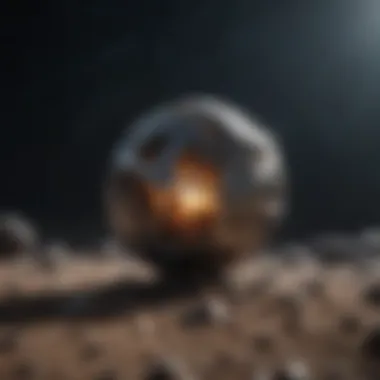
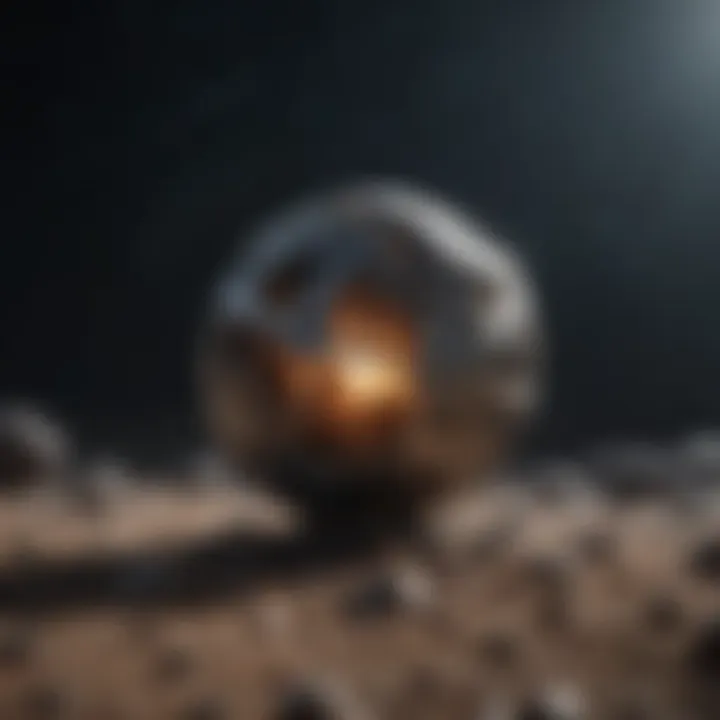
To address these challenges, researchers are exploring improved sensor technology, better data fusion techniques, and international collaboration to enhance tracking capabilities. The future of effective debris management relies heavily on overcoming these hurdles and establishing an intelligent tracking architecture.
"Continuous monitoring of space debris will be essential as we progress into an era of burgeoning space missions."
In summary, tracking systems are imperative for understanding and mitigating the risks associated with space debris. Without effective monitoring, the sustainability of outer space activities could be at serious risk.
Debris Mitigation Strategies
Mitigating space debris is crucial for ensuring the safety and sustainability of our endeavors in outer space. As the amount of orbital debris increases, the risk to spacecraft and satellites rises significantly. Debris mitigation strategies focus on reducing the creation of new debris and minimizing the impact of existing debris. These strategies are important for several reasons, including protecting current missions, preserving space for future endeavors, and maintaining international cooperation in space exploration.
Design and Operation Guidelines
Design and operation guidelines serve as a foundation for preventing the accumulation of orbital debris. The guidelines aim to ensure that new spacecraft and satellite missions incorporate safety measures that minimize the risk of generating debris during their operational lifetime. Key considerations in these guidelines include:
- End-of-Life Plans: Each spacecraft must have a defined end-of-life strategy. This includes either deorbiting the object so that it burns up in the Earth's atmosphere or moving it to a graveyard orbit if it's a geostationary satellite.
- Collision Avoidance: Operators should engage in satellite maneuvering strategies that can avoid potential collisions with other objects in orbit. This requires accurate tracking of both active satellites and debris.
- Robust Engineering: Designing satellites to withstand potential collisions without disintegrating is important. This may involve using materials that can resist fragmentation and incorporating additional shielding.
By embedding these practices into the design stage of space missions, the risk of contributing to orbital debris is significantly reduced.
Active Debris Removal Concepts
Active debris removal concepts refer to innovative methods designed to physically remove existing debris from orbit. Given the increasing congestion in orbit, these concepts hold the potential to change how we manage space debris. Important aspects to consider include:
- Capture Mechanisms: Many active removal strategies involve capturing large pieces of debris using nets, robotic arms, or harpoons. These capture mechanisms must be designed for effectiveness while minimizing risks to intact satellites.
- Deorbiting Techniques: Once captured, debris needs to be safely deorbited. This can involve attaching a propulsion system to bring the debris back into Earth's atmosphere or guiding it into a lower orbit where atmospheric drag can effectively remove it.
- Collaborative Efforts: Countries and organizations need to collaborate for effective removal strategies. Sharing technology and data improves the effectiveness of removal missions and reduces costs.
Implementing active debris removal is essential because it addresses the legacy of space missions and aims to clear space for the continuing growth of the satellite industry.
"Without addressing the risk posed by current debris, future missions and innovations may be severely hindered."
In summary, deploying effective debris mitigation strategies is essential not only for the safety of current space operations but also for the longevity and sustainability of future exploration. The integration of design guidelines and active removal techniques represents a proactive stance towards managing the increasing challenge of orbital debris.
International Policies and Frameworks
International policies and frameworks play a crucial role in managing the challenges posed by orbital debris. As the number of active satellites and missions grow, so does the need for effective regulations to safeguard space activities. These policies guide nations towards best practices, aiming to minimize space debris through coordinated efforts and shared responsibility. Without such frameworks, the risk of collisions in space would increase significantly, impacting both current operations and future exploration.
UN Guidelines on Space Debris
The United Nations has addressed the issue of space debris through guidelines that encourage nations to adopt responsible behaviors. These UN guidelines provide a comprehensive set of recommendations aimed at preventing and mitigating space debris generation. They cover various aspects, including the design and operation of spacecraft, post-mission disposal, and active debris removal.
Key components of the UN guidelines include:
- Prevention of Debris Creation: Encouraging countries to design satellites and launch vehicles that limit the production of debris during their operational life and at the end of their missions.
- Post-Mission Responsibility: Emphasizing that satellite operators must ensure proper disposal of defunct satellites to avoid contributing to the debris population.
- International Cooperation: Promoting the sharing of information about space activities and debris tracking to enhance collective efforts in monitoring the orbital environment.
“The long-term sustainability of outer space activities requires a coordinated approach among various stakeholders.”
National Approaches to Regulation
Different countries have developed their own regulatory frameworks for space debris management. While the UN guidelines provide a foundation, national policies can vary significantly based on technological capabilities, economic factors, and space ambitions.
Several nations have established specific regulatory measures:
- United States: The Federal Aviation Administration oversees the launch and operation of US spacecraft, ensuring compliance with national debris mitigation standards.
- European Space Agency: The ESA has implemented guidelines that are stricter than the UN's, focusing on long-term sustainability and aiming to minimize collision risk in space.
- China and Russia: Both nations have begun integrating debris mitigation strategies into their space missions, although transparency in their approaches could be improved.
A unified framework can help streamline international efforts, but differences in national policies pose challenges. Collaboration among nations is essential to establish effective regulations that govern the behavior of all space-faring entities, balancing national interests with global responsibilities.
Technological Innovations in Debris Management
As the issue of orbital debris becomes more pressing, technological innovations emerge as a crucial component in addressing the challenges it presents. These innovations focus on the design, tracking, and potential removal of space debris, providing effective solutions to ensure the safety of current and future space missions.
Emerging Technologies
Recent advancements in technology offer promising avenues for managing debris effectively. Among these innovations, several key technologies are worth noting:
- Robotic Systems: Developed by agencies like the European Space Agency (ESA), robotic systems can capture or deorbit large debris. These systems often utilize nets or harpoons to secure and remove defunct satellites or spent rocket stages.
- Lasers for Orbital Debris Removal: Laser technology is being explored to nudge debris out of orbit or reduce its velocity, thus minimizing potential collision risks. This method involves using ground-based or space-based lasers to interact with debris, ideally leading to atmospheric reentry.
- Autonomous Spacecraft: Some initiatives focus on creating autonomous spacecraft designed specifically for debris capture. These spacecraft can navigate complex orbits and identify debris, providing a proactive approach to space debris management.
The advantages of these technologies are significant. They not only enhance safety in orbit but also contribute to the sustainability of space exploration. The drive to innovate in debris management is motivated by the need to limit the growth of orbital debris and protect valuable space assets.
Potential Future Developments
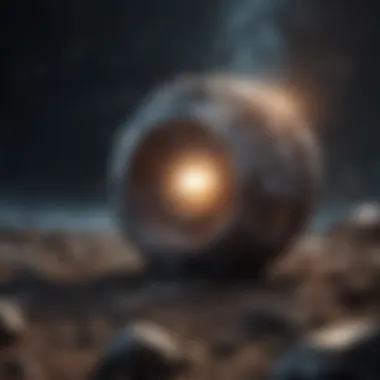
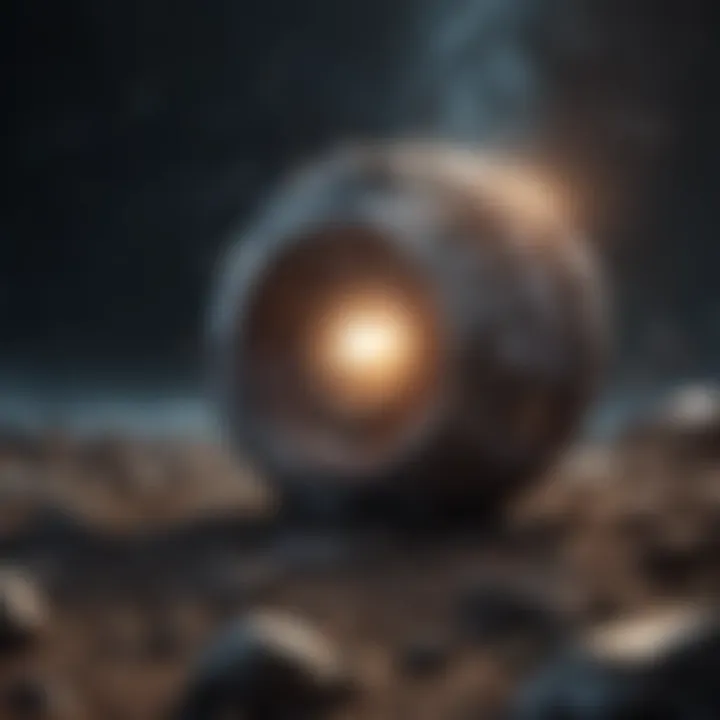
The future of debris management will likely see even more advanced technologies coming into play. Some potential developments include:
- Space Tugs: These could be deployed to transport defunct satellites from congested orbits to designated "graveyard" orbits, thereby reducing collision risks in populated zones.
- Material Science Innovations: Advances in materials designed to degrade faster upon sunlight exposure or atmospheric entry may lead to new satellite designs that naturally reduce long-term debris accumulation.
- International Collaborative Technologies: Coding initiatives that leverage the expertise from multiple nations could lead to shared technology frameworks for debris monitoring and removal. This would enhance the global response to orbital debris challenges.
In summary, technological innovations play a pivotal role in understanding and managing orbital debris. With continuous advancements, there is hope for a more organized and safer space environment. Addressing the problem of space debris is not solely about responding to current hazards; rather, it is about protecting the future of space exploration for all nations.
Public Awareness and Education
Raising public awareness about space debris is a crucial step in addressing this growing problem. As space exploration continues to expand, understanding the implications of junk in orbit is essential. The dangers posed by orbital debris affect not only scientific missions but also international security and economic interests. Public education about these issues fosters informed discourse and supports initiatives aimed at mitigating risks associated with space debris.
Role of Education in Mitigation
Education serves as a powerful tool in the fight against space debris. It enables future generations to understand the importance of responsible space operations. Educational programs can incorporate practical skills, foster innovation, and cultivate a mindset geared towards sustainability.
Students studying aerospace engineering, physics, or environmental sciences should be introduced to the challenges associated with space debris. They can learn about current tracking technologies and the design principles aimed at minimizing debris generation. By integrating this information into the curriculum, educational institutions can inspire students to contribute actively to debris mitigation strategies.
Furthermore, higher education institutions can collaborate with space agencies to create research opportunities. These partnerships can lead to technological advancements that help reduce large-scale debris creation.
Public Engagement Initiatives
Public engagement initiatives play a significant role in enhancing awareness and fostering a sense of community responsibility. Several organizations are developing programs designed to inform the general population about space debris and the impact it may have on Earth and human activities.
- Workshops and Seminars: These events offer a platform for experts to share knowledge and engage with attendees. Participants can learn about recycling efforts, sustainable practices, and technological innovations in space.
- Online Campaigns: Social media platforms like Facebook and Twitter can be leveraged to reach broader audiences. Informative posts, infographics, and videos can make complex information more accessible to the general public.
- Interactive Exhibits: Museums and science centers can host exhibits focused on space debris. Such exhibits can visually demonstrate the scale and impact of the issue while providing hands-on activities for visitors.
"Increasing public awareness about space junk is just as important as the technical solutions we develop. Education and engagement can transform awareness into action."
In summary, strengthening public awareness and education around orbital debris is vital in mitigating this risk. By focusing on educational initiatives and public engagement, we can cultivate an informed populace that advocates for sustainable practices in space exploration.
Future of Space Exploration in Context
The future of space exploration is increasingly intertwined with the challenges posed by orbital debris. As humanity ventures further into space, understanding how to manage and mitigate the threats from junk in orbit becomes essential. The increasing congestion in space not only complicates current missions but also puts future exploration endeavors at risk.
Space agencies and private companies are keen on expanding their operations. However, before embarking on ambitious projects, they must consider the implications of existing debris. The collision risk with space junk has been a significant concern, causing potential delays and modifications to missions. Therefore, addressing space debris is vital for the sustainability of future exploration efforts.
Sustainable Practices Moving Forward
To ensure space remains accessible for future generations, sustainable practices must be implemented. This includes designing spacecraft that are less likely to contribute to debris and establishing protocols for end-of-life disposal.
Key strategies include:
- Designing for Deorbit: Satellites should be engineered to deorbit safely at the end of their operational lives.
- Using Propulsion Systems: Active propulsion systems can assist in moving defunct satellites out of high-traffic orbit zones.
- Recycling Materials: Developing technology to recycle components from decommissioned satellites in space could reduce the necessity for new materials.
By integrating these practices, the space community can begin to create an environment where actions taken today do not compromise those of tomorrow.
Vision for Space Debris Management
A forward-thinking vision for space debris management requires collective action and innovative solutions. This entails not only adherence to international guidelines but also the establishment of robust policies that encourage responsible behaviors in space.
Potential aspects of this vision include:
- Global Cooperation: Aligning international regulations to ensure that all space-faring nations follow similar practices regarding debris management.
- Investment in Technology: Funding research into debris tracking and removal technologies, such as harpoons or nets, is necessary.
- Public-Private Partnerships: Collaboration among governments and private companies can expedite advancements in debris mitigation.
"Understanding and combating orbital debris is not just a technical issue, but also a societal one that demands our immediate attention and action."
In summary, the direction of future space exploration hinges upon recognizing the gravity of orbital debris challenges and collectively working towards sustainable solutions. It is imperative that we create a balanced approach that ensures safety while fostering innovation and exploration in the ever-expanding frontier of space.
Culmination
The conclusion serves as a critical reflection point within this article, emphasizing the multifaceted challenges posed by orbital debris. Given the ever-increasing activity in outer space, it becomes imperative to understand the intricacies surrounding space junk. This topic is not merely a theoretical concern but a pressing reality that impacts future exploration and the safety of ongoing missions.
Importance of Addressing Orbital Debris
As outlined throughout the article, space debris consists of various elements, including defunct satellites and fragments from past collisions. Each of these components contributes to an environment that is not only hazardous for operational spacecraft but also complicates future endeavors in space. The evolution of space debris management is crucial, especially as private and governmental entities plan more missions.
Benefits of Mitigation Strategies
Implementing effective mitigation strategies can provide significant benefits. These include:
- Enhancing safety for current and future orbital missions.
- Reducing the likelihood of collisions that can generate more debris.
- Establishing guidelines that promote sustainable practices in space operations.
Considerations for the Future
The landscape of space activity is shifting. With increasing launches and plans for long-term human presence in orbit and beyond, the risk associated with orbital debris needs deliberate and proactive actions. Thus, continued research, policy development, and international cooperation are essential.
"Space debris management is a shared responsibility among all nations and organizations involved in space activities."







